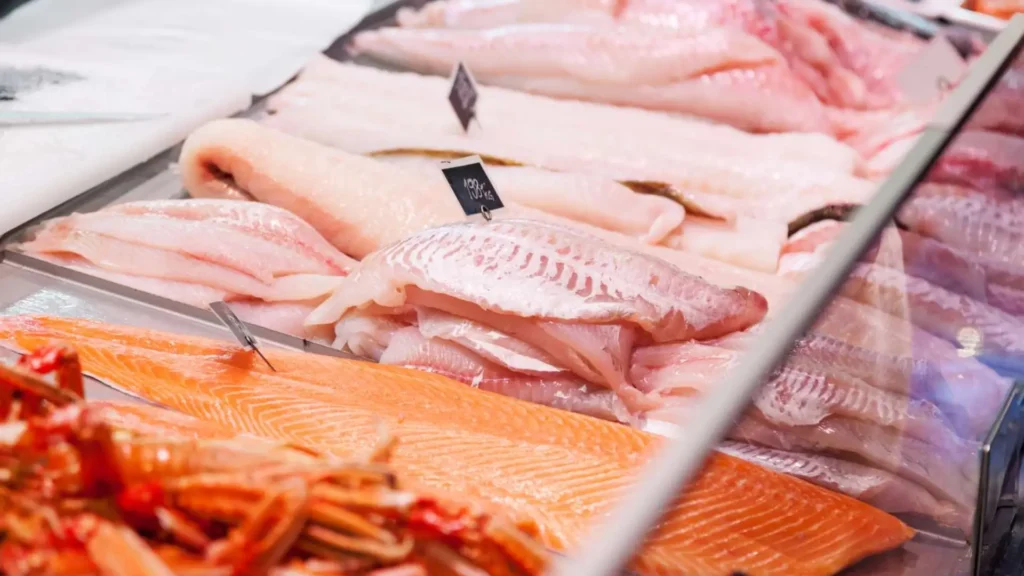When you’re aiming to master the art of securing the best deals at your local seafood market, you’ll need to keep a sharp eye on more than just the day’s prices. Understanding the ebb and flow of seafood availability throughout the seasons is crucial. For instance, knowing when salmon runs are at their peak or when lobster prices dip can give you a critical edge. But there’s a trick to this trade that many overlook: the art of negotiation. Engaging sellers with knowledge and respect can open doors to discounts, especially if you show interest in bulk purchases. Wondering how to strike the right balance between assertiveness and courtesy? Let’s explore some effective strategies.
Understanding Seasonal Seafood Pricing
Seasonal shifts significantly impact seafood pricing, allowing you to save money by purchasing at peak times. You’ve got to know when seafood varieties are abundant because prices drop as supply increases.
For instance, lobster prices typically fall during the summer months when the catch is plentiful, especially in areas like Maine and Canada. Similarly, you’ll find lower prices for salmon during its high season in late spring through early summer, when the runs are at their peak in places like Alaska and the Pacific Northwest.
Moreover, understanding these patterns not only helps you snag a bargain but also ensures you’re enjoying seafood at its freshest.
For crabs, the best times are usually late spring through late fall, depending on the region. Oysters, on the other hand, are best purchased in months with an ‘r’ (September through April), which is when they’re harvested more extensively and are less likely to be spawning.
Always plan your seafood purchases around these seasonal trends to maximize freshness and minimize cost. You’ll not only get the best your money can buy but also contribute to sustainable fishing practices by supporting fisheries during their most bountiful periods.
Tips for Choosing Quality Seafood
When selecting seafood market, it’s crucial to look for freshness indicators such as bright eyes, firm flesh, and a clean smell to ensure you’re getting the best quality. Don’t be shy to give everything a good look and even a sniff. Fresh fish shouldn’t smell fishy; it should remind you of clean water or just-sliced cucumber.
If you’re picking shellfish, make sure they’re alive before buying. Clams, mussels, and oysters should have closed shells or close when tapped. If they don’t, they’re likely dead and not safe to eat. For crabs and lobsters, liveliness is key. They should be active, not lethargic.
When examining fillets, check for vibrant, consistent coloring and a glossy appearance. Dull or dry spots, or discolorations, often indicate age or improper handling. Also, press the flesh lightly; it should spring back, not leave an indentation.
Lastly, consider the eyes and gills of whole fish. Eyes should be clear and slightly bulging. Cloudy eyes signal age. Gills should be bright red or pink, not slimy or brownish.
This level of scrutiny might seem intense, but it’s the only way to guarantee you’re taking home seafood that’s fresh and delicious.
Strategies for Negotiating Prices
After mastering how to select quality seafood, your next step is to learn effective strategies for negotiating prices to get the best deals. First off, timing is crucial. Visit the market late in the day when sellers are more likely to reduce prices to clear their stock. However, don’t compromise on quality; late-day discounts can still mean fresh seafood if you choose wisely.
Next, don’t be shy about asking for a better price, especially if you’re buying in bulk. Vendors often have a margin that allows them to give discounts on larger purchases. It’s a win-win; they move more product, and you save money. Start the conversation with a friendly greeting and express your interest in buying several items. Then, ask if there’s a special rate for bulk purchases.
Always be polite and respectful in your negotiations. Remember, a smile and a pleasant demeanor can be just as persuasive as the cash you’re offering. If the seller says no, don’t push it. Thank them and either accept the offer or move on. There are always other vendors, and respecting their boundaries could lead to better deals in the future.
Now that you’re clued up on the seasonal trends and quality markers of seafood market, you’re ready to dive into the market with confidence. Remember, timing your visit can lead to fantastic deals, especially late in the day.
Always start negotiations with a smile and respect the seller’s final say. Buying in bulk? Don’t hesitate to mention it—it could just tip the scales in your favor. Go ahead, use these insights to snag the best seafood deals like a seasoned pro!
Learn more:
Tips for Sustainable Seafood Shopping Practices at Your Favorite Market
How to Make Informed Choices When Buying Seafood From Market Vendors

